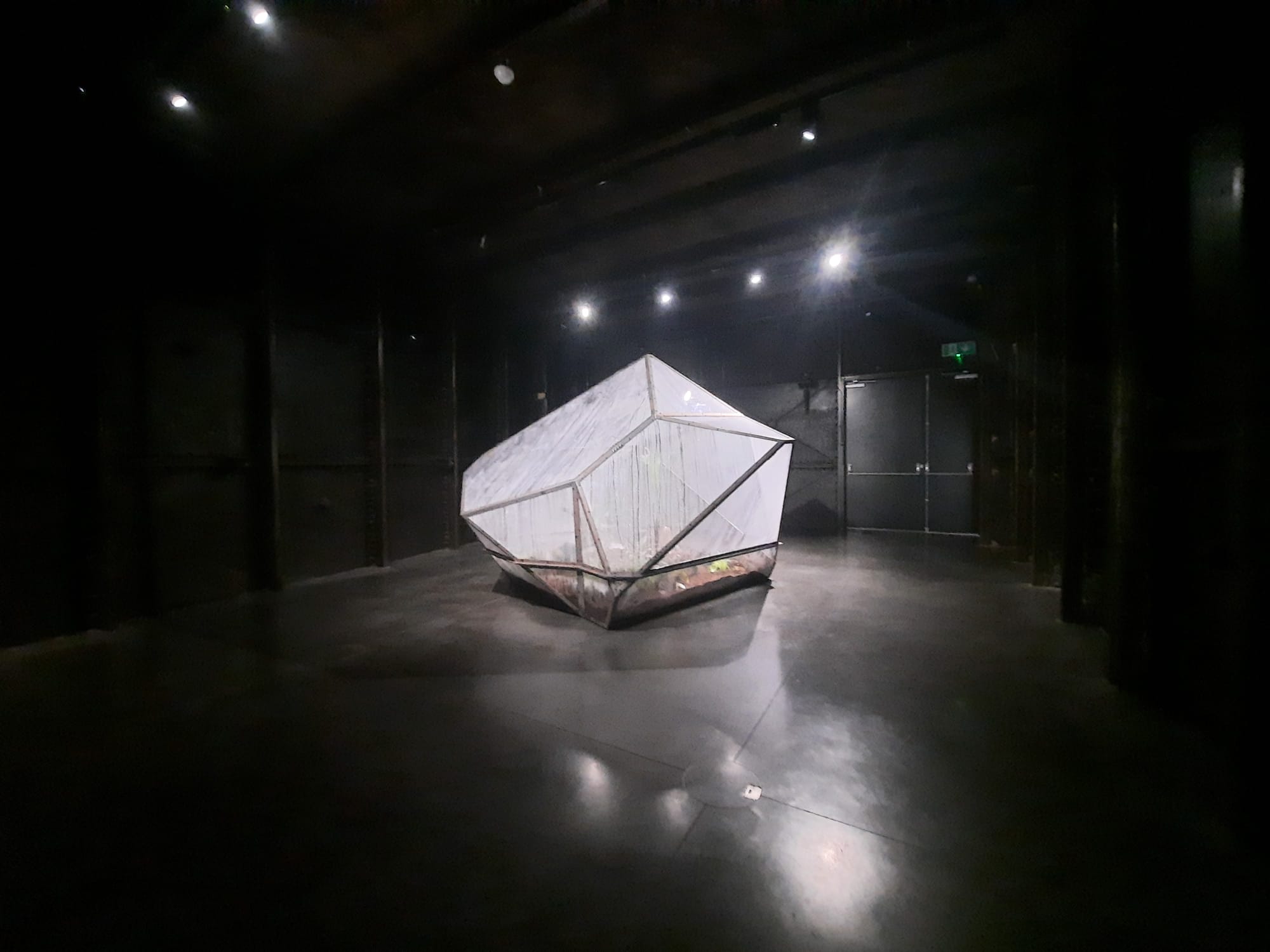Sammy Baloji – Goldsmiths CCA, London
My first visit to Goldsmiths’ new contemporary art venue introduces me to Sammy Baloji, a Congolese artist who combines intensive research with a diverse artistic practice.
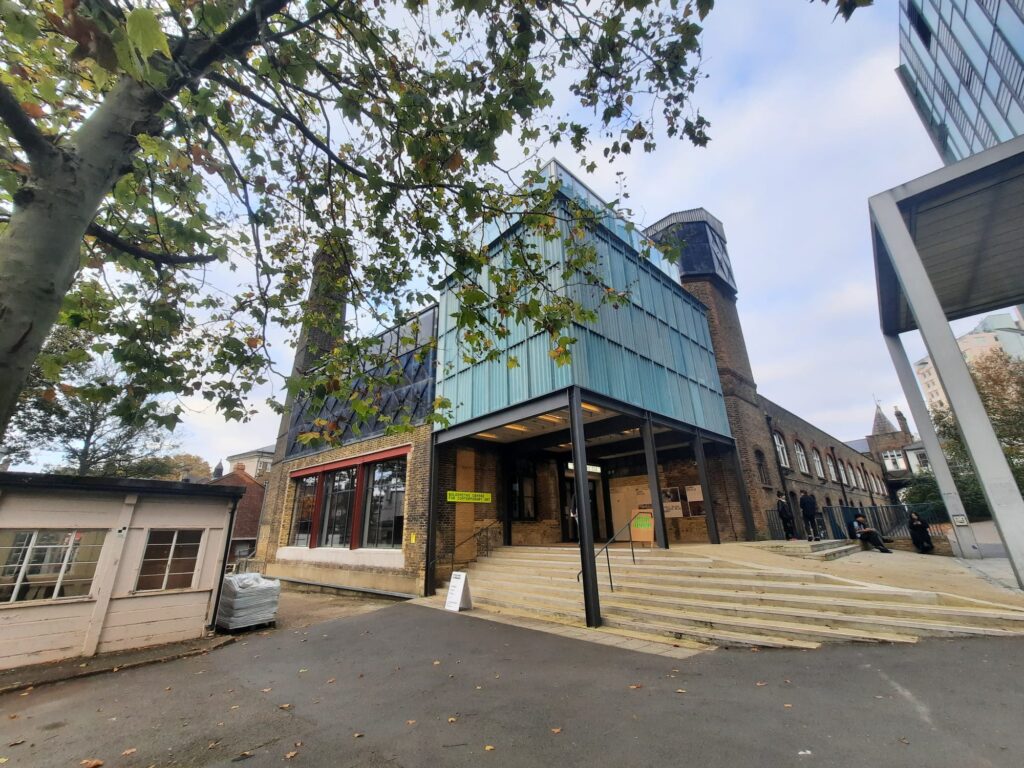
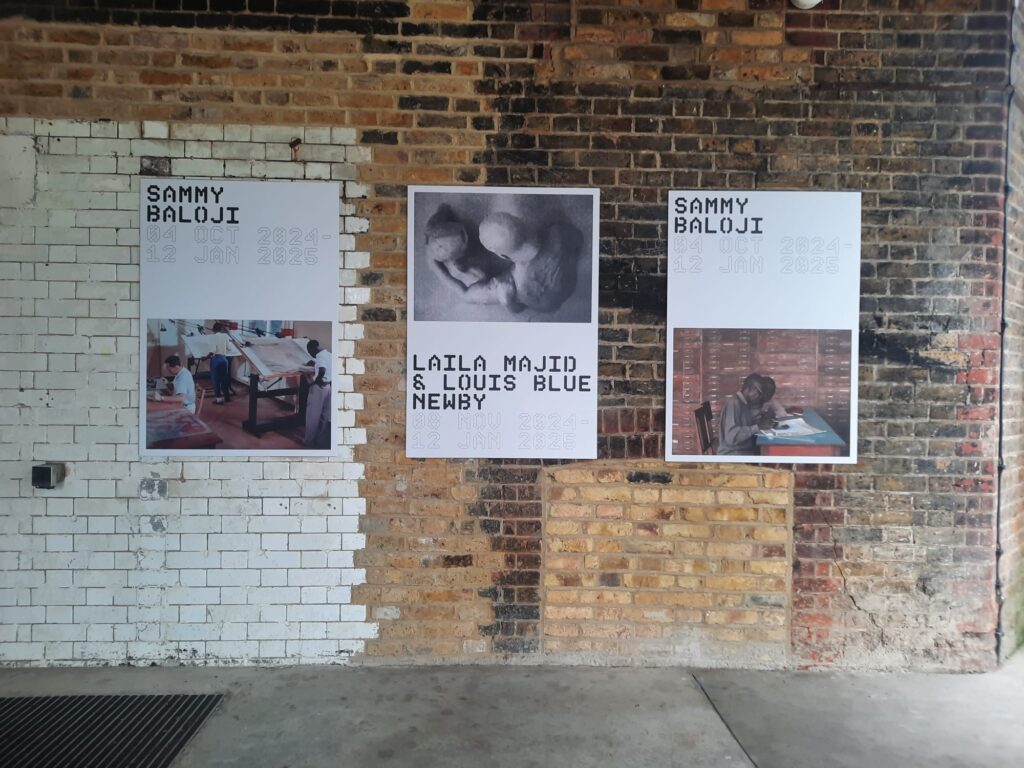
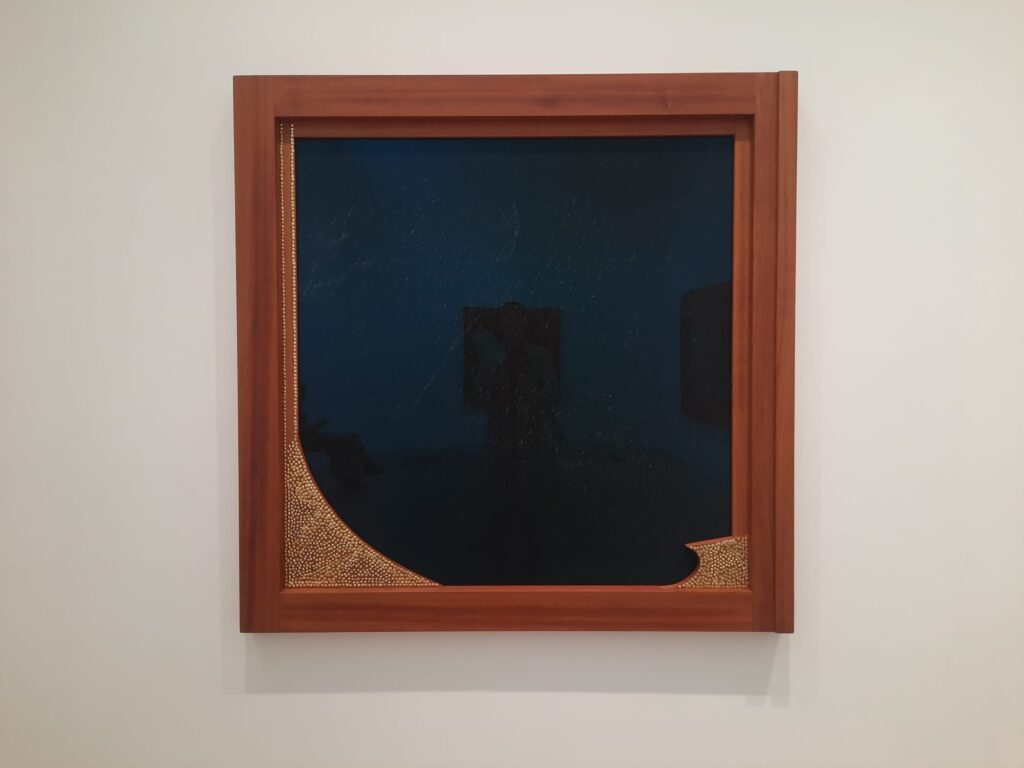
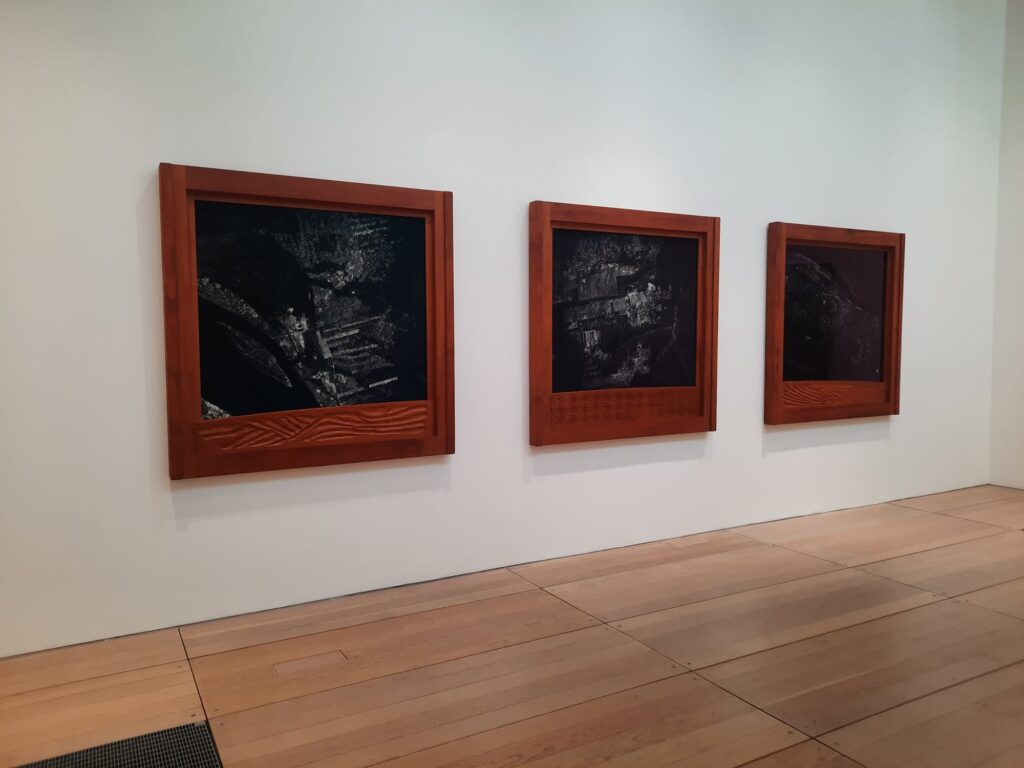
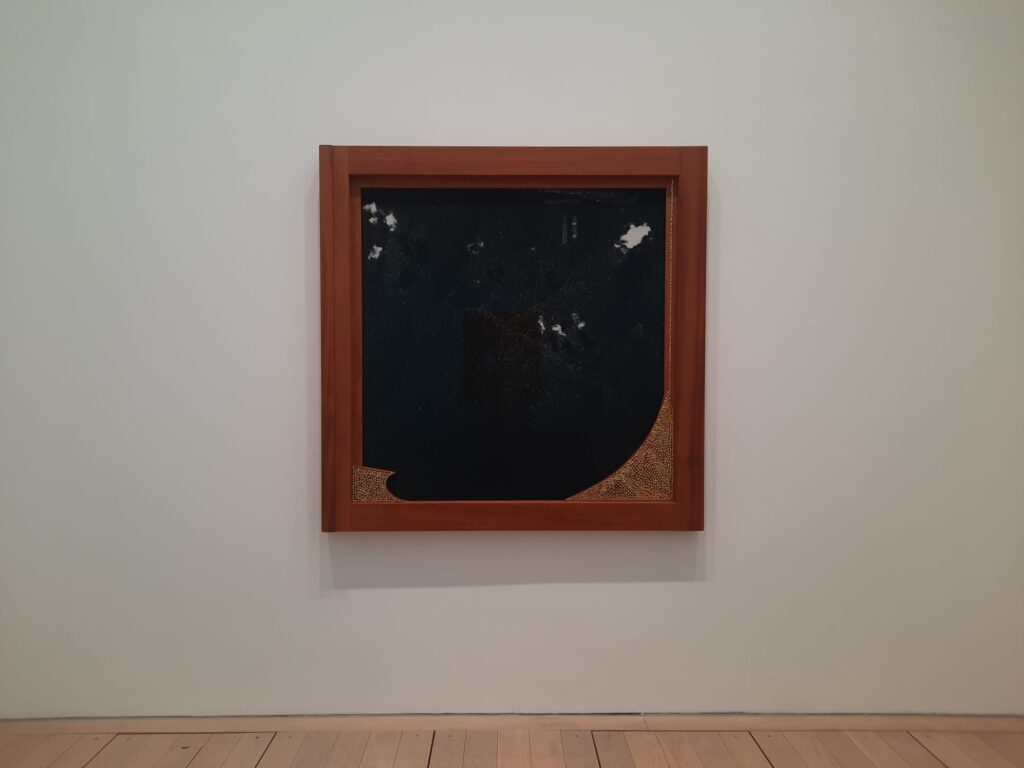
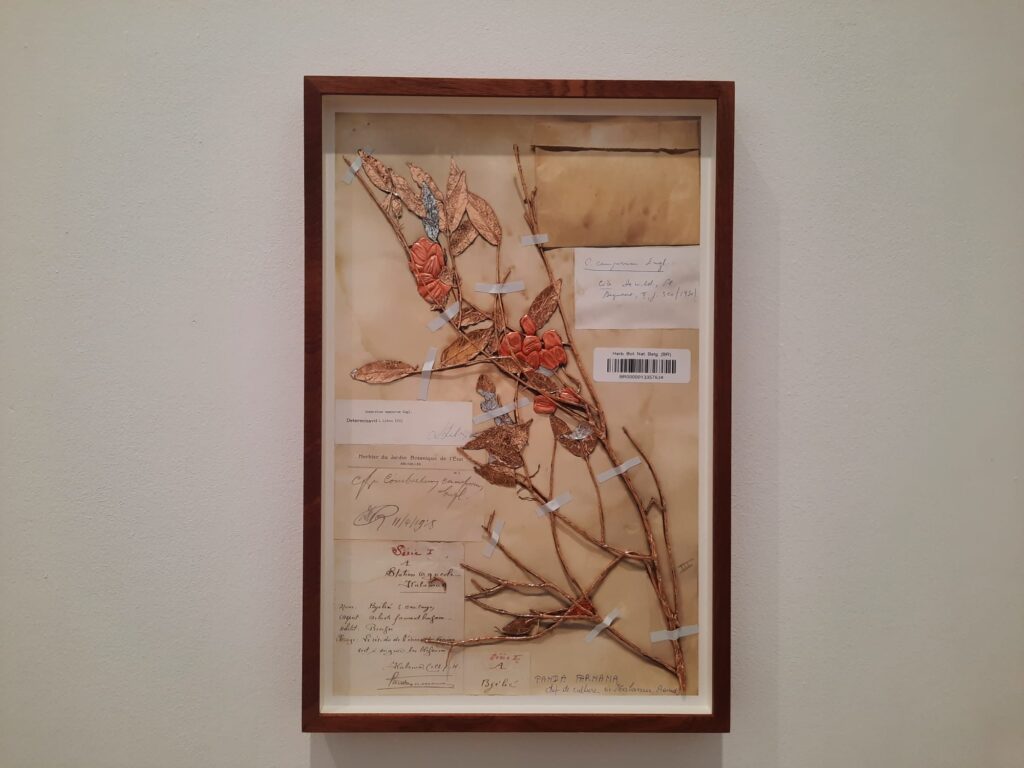
Sammy Baloji
In my last post, I talked about an exhibition in which interesting ideas failed (for me) to translate into a substantial and meaningful gallery experience. Today’s post is the polar opposite.* An exhibition of work by Sammy Baloji at Goldsmiths Centre for Contemporary Art (CCA) had me questioning aspects of art history and world politics that I’ve never before considered.
Sammy Baloji was born in 1978 in Lubumbashi in the Democratic Republic of the Congo. He studied literature and human science at the University of Lubumbashi before making a start in an art career, first as a cartoonist. He later specialised in video art and photography, before incorporating additional media such as sculpture. Much of his art has focused on memory, history, colonialism and archives, particularly the legacies of Belgium’s infamously cruel colonisation of the Congo.
Baloji’s is a very research-intensive artistic style. In this exhibition, which includes two new commissions, we see this in action. The works incorporate archival images and other sources, propagandist film clips, and audio recordings of Congolese soldier Albert Kudjabo, subjected to ethnographic study as a German prisoner of war during WWI. Every work shows careful consideration, and nothing is without layers of meaning. A Wardian Case (yes those again) echoes the shape of uranium minerals in scientific drawings, as do prints encountered later in the basement galleries. Materials matter. Shapes matter. Baloji has designed everything you see to communicate on as many levels as possible.
*In both cases I’m talking about free to visit galleries on my doorstep in South East London, so even at a 50% success rate I’m doing pretty well.
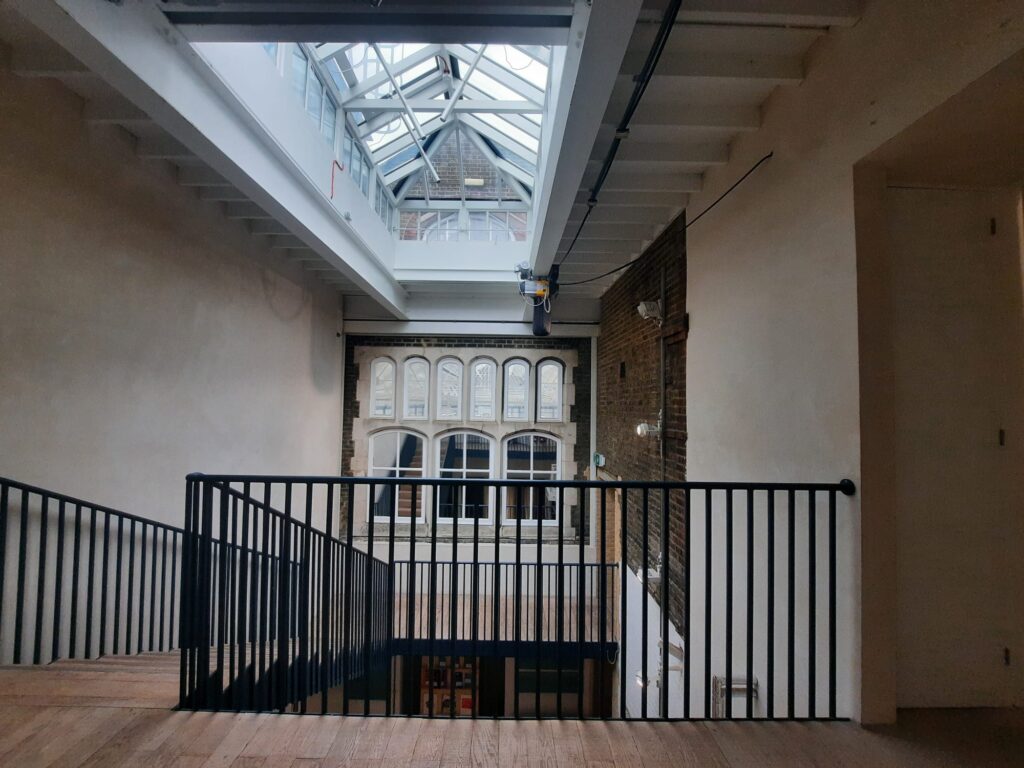
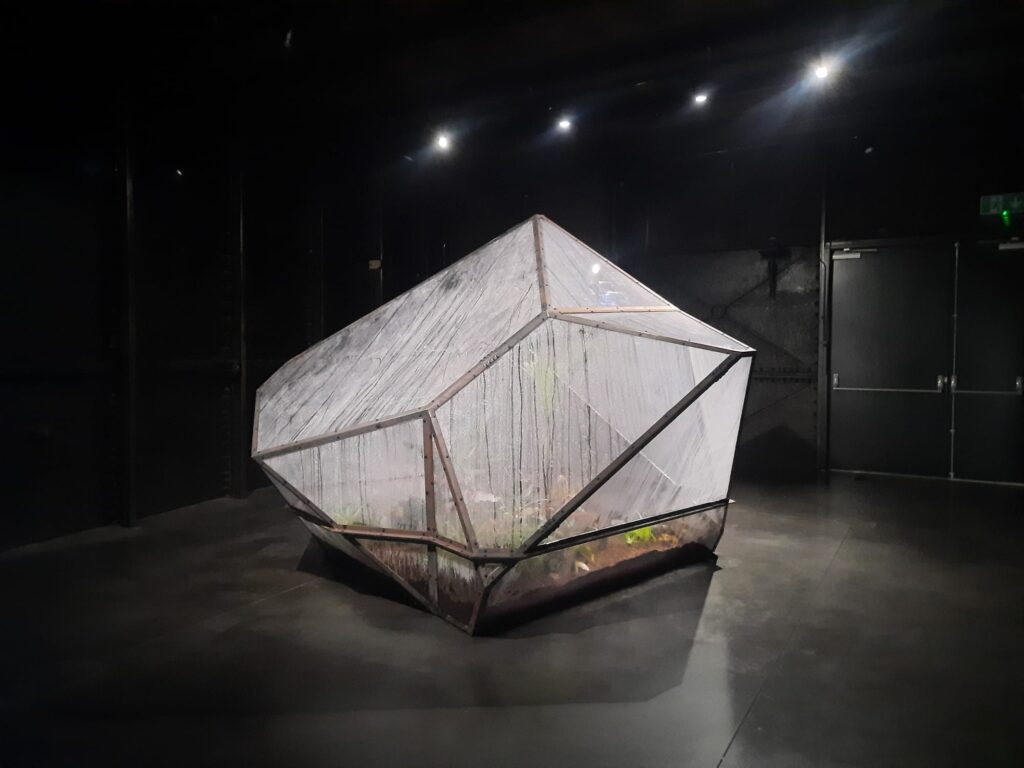
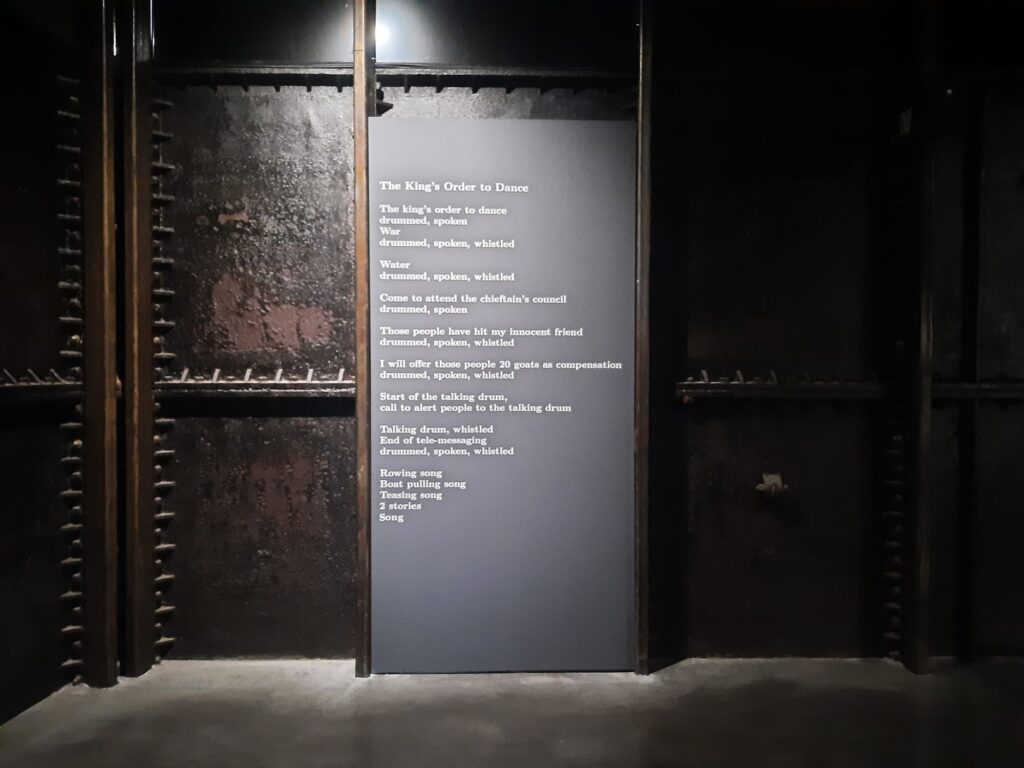

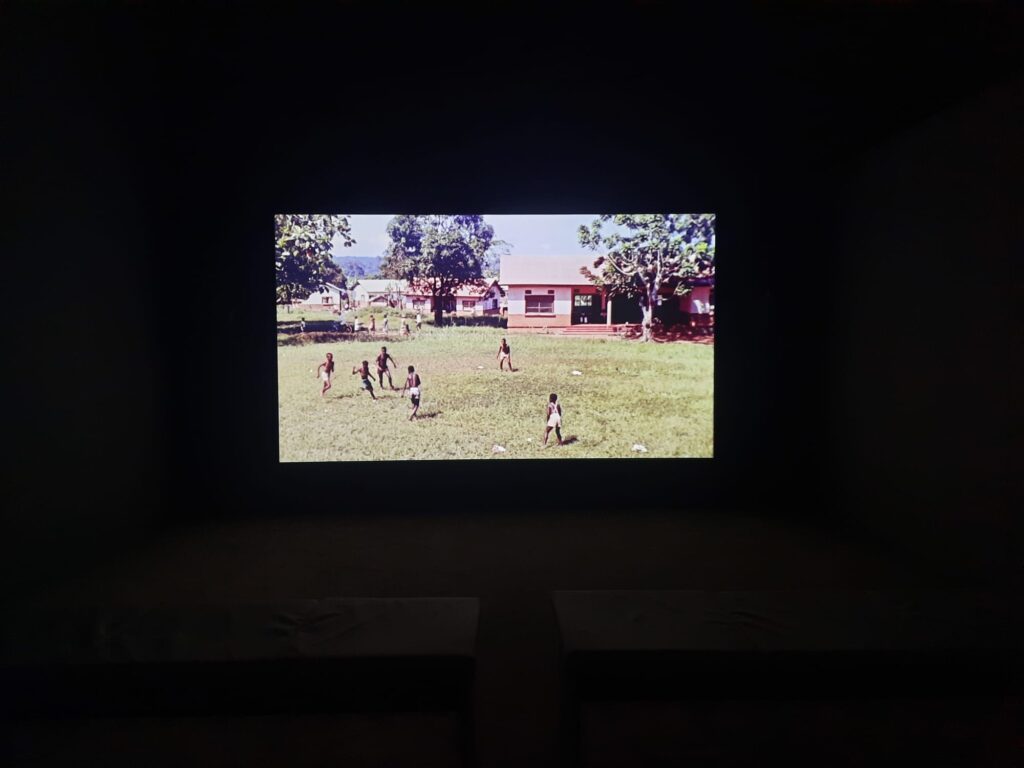
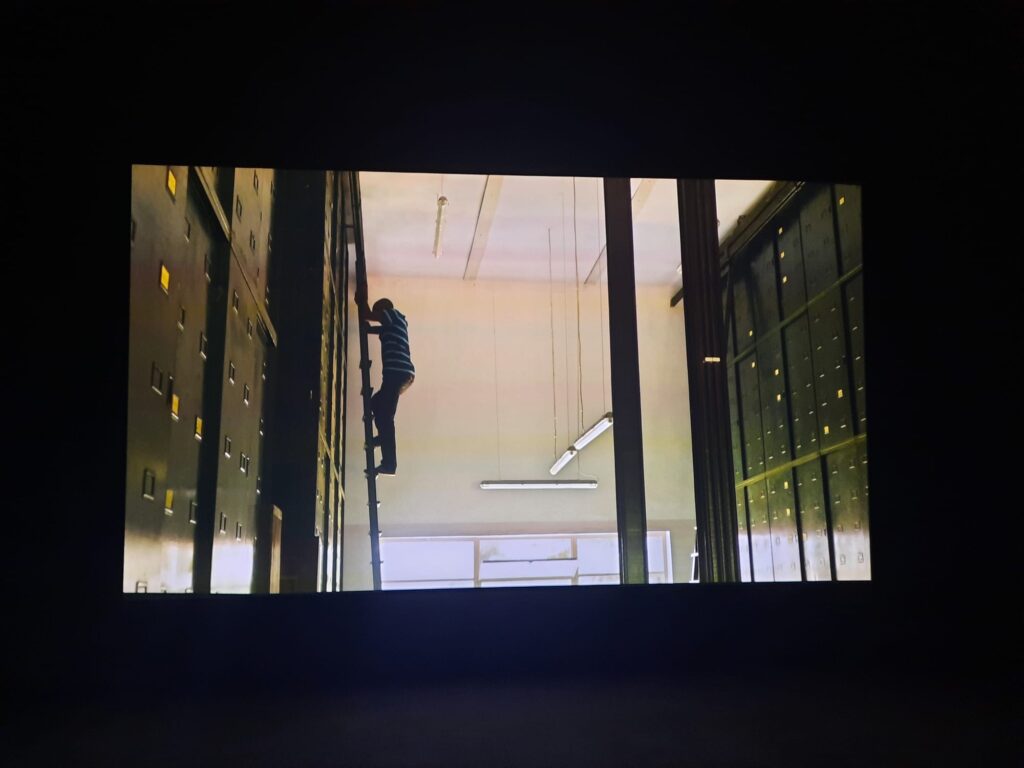
The Enduring Structures of Colonialism
Each gallery in the exhibition contains different works, but a few consistent themes run through them. We start upstairs with new commission Still Kongo I-V. The title is a play on Style Congo, an alternative name for Belgian Art Nouveau. And this is what I mean when I say Baloji has you questioning things you would never suspect. In my own journey to loving art and art history I remember being entranced by the dramatic shapes and sinewy lines of Art Nouveau in places like the Musée Horta. I hadn’t heard it referred to as Style Congo. But so it was, a reference to the Congolese raw materials (like wood) and motifs which inspired European artists. Baloji creates frames which play on this history, and surround archival aerial images of the Congolese rainforest from 1958-59.
From the outset, then, we start to think about colonial legacies, wealth and resource extraction, and the imposition of structures of knowledge and organisation. This continues in the next room where we encounter …and to the North Sea waves whispering sunken stories (II). This installation has the uranium-shaped Wardian Case I mentioned, with tropical plants inside. Against this backdrop the recordings of Kudjabo play. Next door, The Future that Never Was intersperses footage of the colonial National Institute for Agronomic Study of the Belgian Congo and its contemporary incarnation on the same site. Colonialism has ended but not ended, Baloji suggests. People work in the same ways in the same place, perpetuating practices rooted in paternalistic colonialism. It’s a very tangible demonstration of how pervasive colonialism’s enduring impact is for supposedly post-colonial societies.
Downstairs, I had my mind blown once more. I’m deeply interested in abstract expressionism, and in the intersection of art, colonialism and politics. How did I not know that the style was used by the CIA as a cultural weapon during the Cold War? It’s just one of many strands which surfaces in the most strongly archival installation in the exhibition, a dialogue between Baloji and historian Pedro Monaville.
To finish, a circa 45 minute video (Tales of the Copper Cross Garden, Episode I) documents the process of turning copper ore into wire. It’s mesmerising, and is yet another thing I’d never given much thought to. An archival image of Congolese choir boys bearing copper crosses hammers the point home. And Copper Negative of Luxury Cloth Kongo Peoples: Fragments of Interlaced Dialogues takes its inspiration from a 2015 exhibition at the Met, rendering technically and artistically important artefacts in bronze to highlight the Congo’s history of exploitation and extraction.
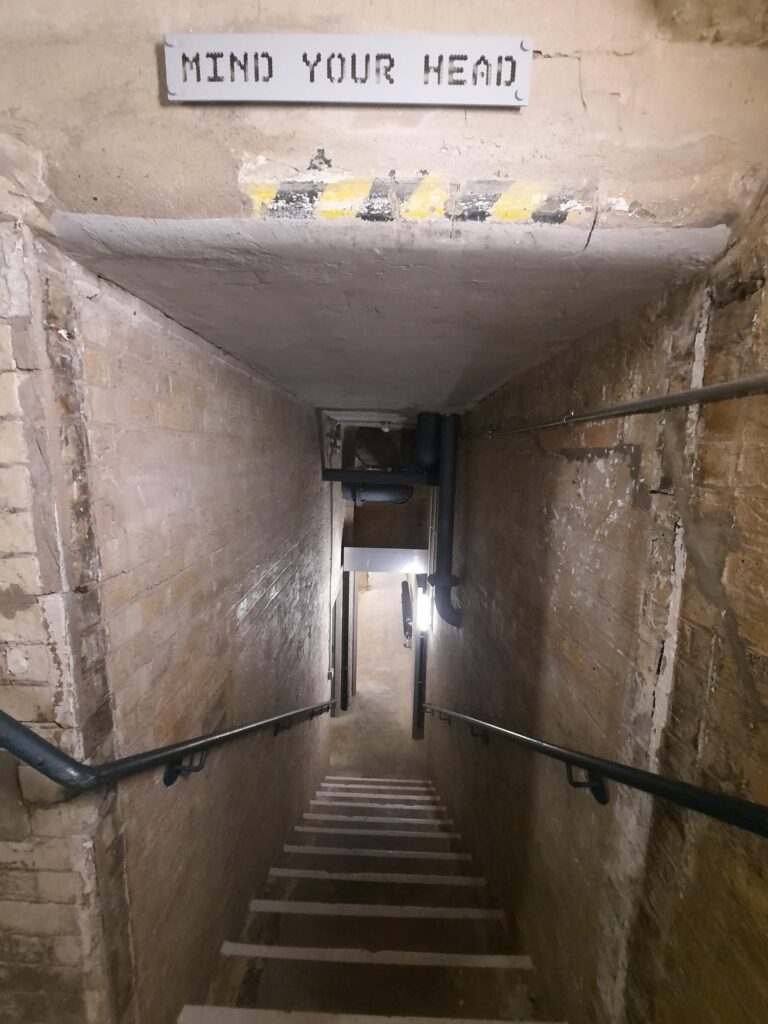
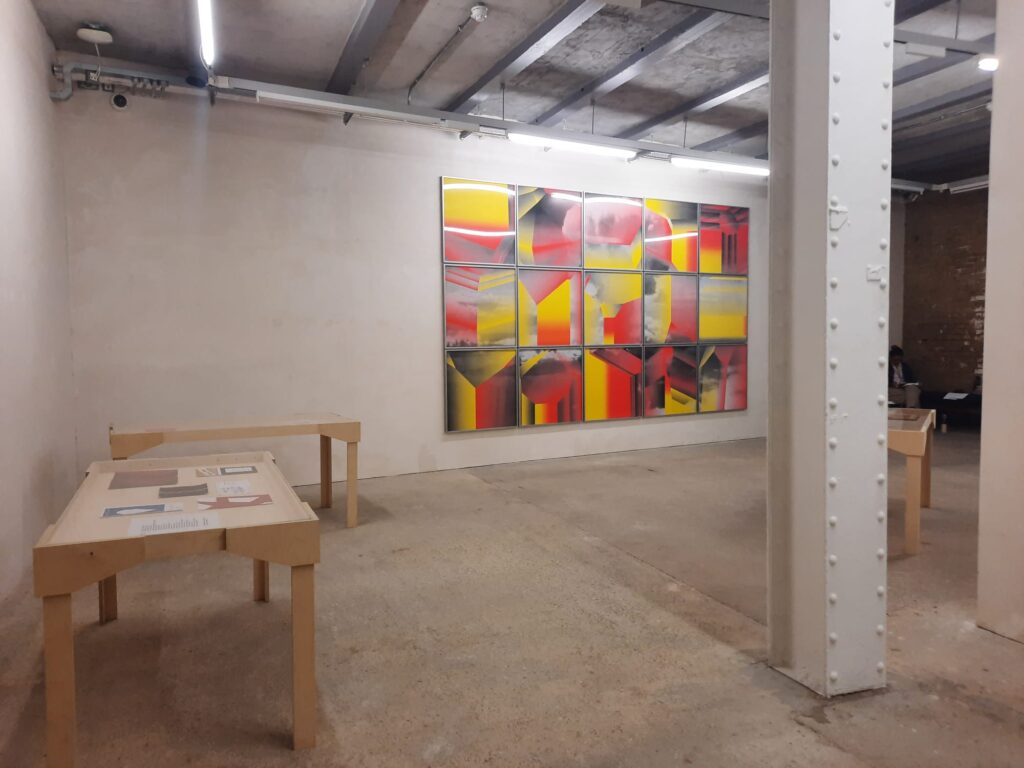
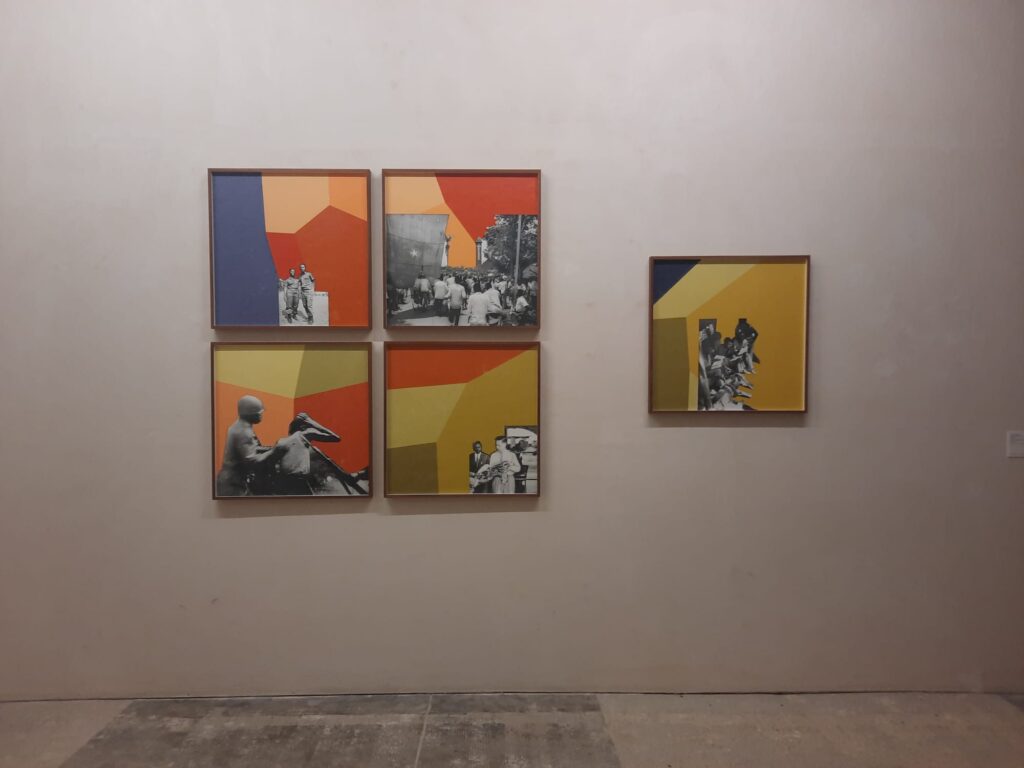
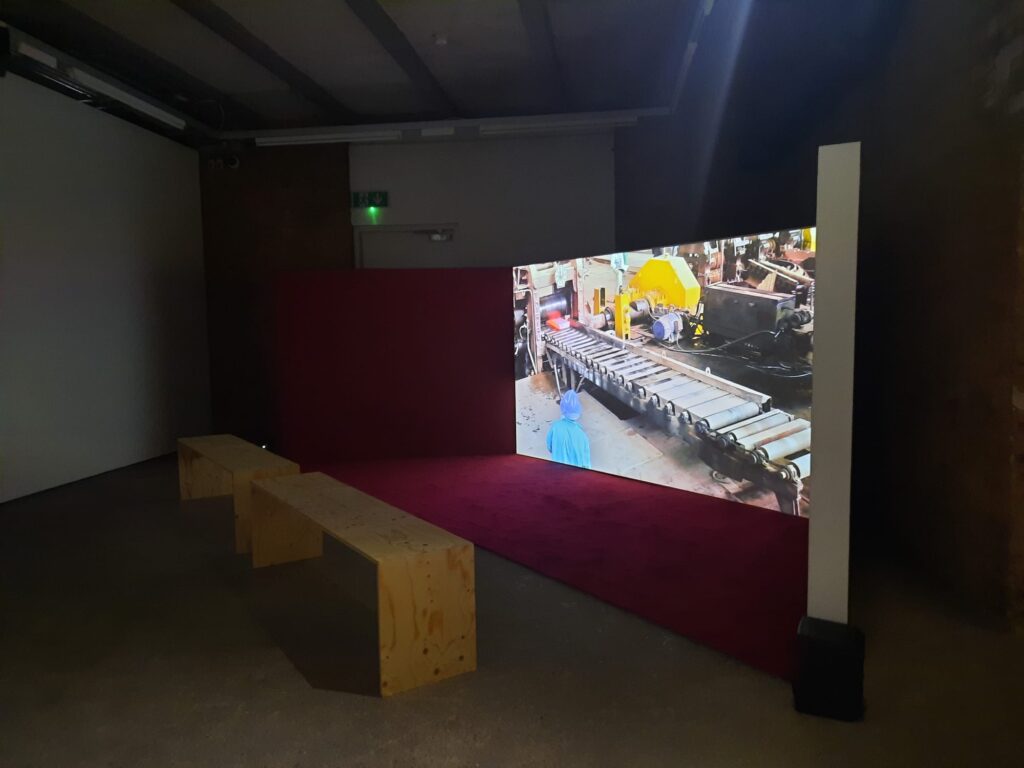
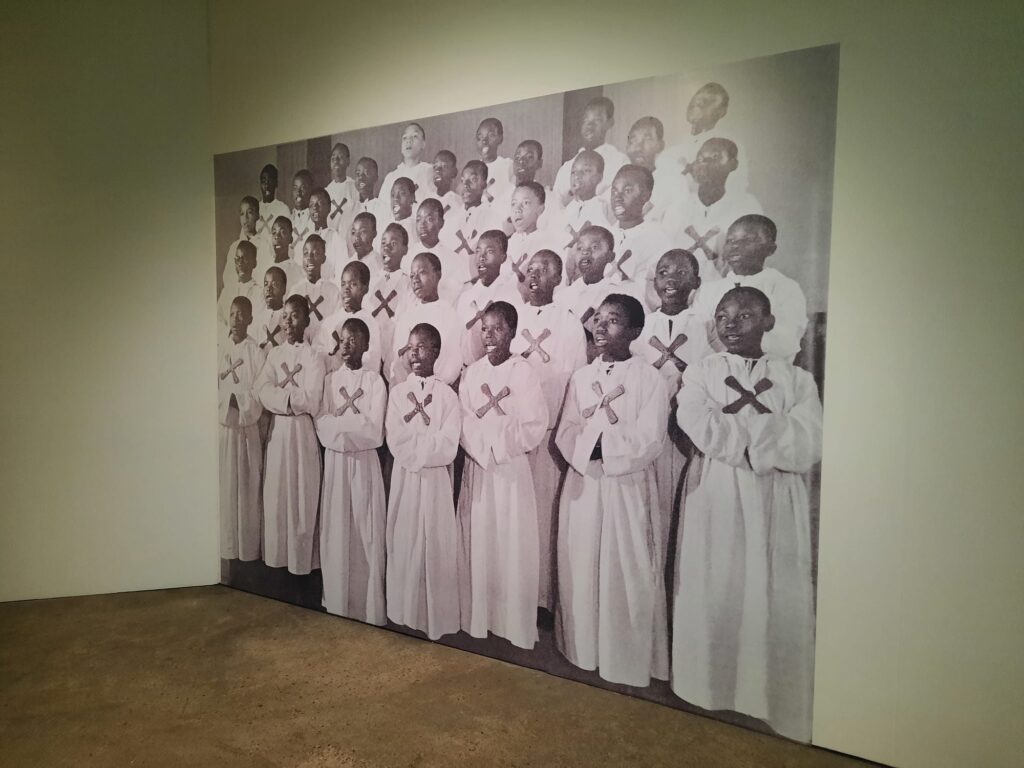
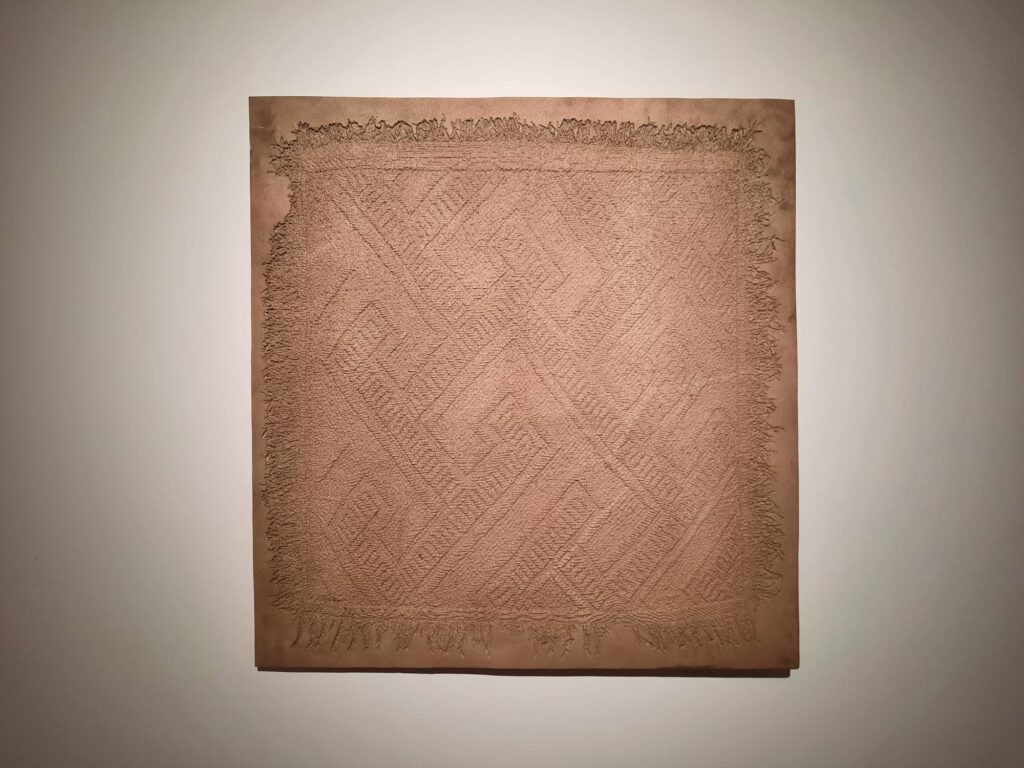
Balancing Artistic Value and Message
So as that quick overview shows, this exhibition packs a lot of meaning and research into relatively few works. Art which is this information-heavy sometimes forgets that it is art, and becomes all about delivering the message. But, I am happy to say, Sammy Baloji successfully balances the importance of his messages with compelling visual impact. In fact, that they are so impactful, with layers of meaning like an onion, makes them powerful indeed.
I really enjoyed the way Baloji lays bare the workings of our world in such a matter of fact way. It’s a given that colonialism has an enduring legacy. But Baloji shows its tendrils, in art, design, research, business, agriculture, religion. Taking the example of Belgium and the Democratic Republic of the Congo, it impacts basically every facet of life. The impacts, however, look different for former colonisers and colonised. A strong artistic voice such as Baloji’s adds much to this critical and uncomfortable dialogue.
I also very much enjoyed a first visit to Goldsmiths CCA. It’s a great little gallery in a Grade II-listed former boiler house and laundry for the Laurie Grove Baths. This type of industrial space is a much more interesting backdrop for contemporary art than the traditional ‘white cube’. The installation with the Wardian Case, for instance, is ensconced in heavy riveted walls, like being inside a tank. It’s incredibly atmospheric. As the closest art gallery to Salterton Arts Review headquarters, I can’t wait to come and see more exhibitions here.
Salterton Arts Review’s rating: 4/5
Sammy Baloji on until 12 January 2025
Trending
If you see this after your page is loaded completely, leafletJS files are missing.

